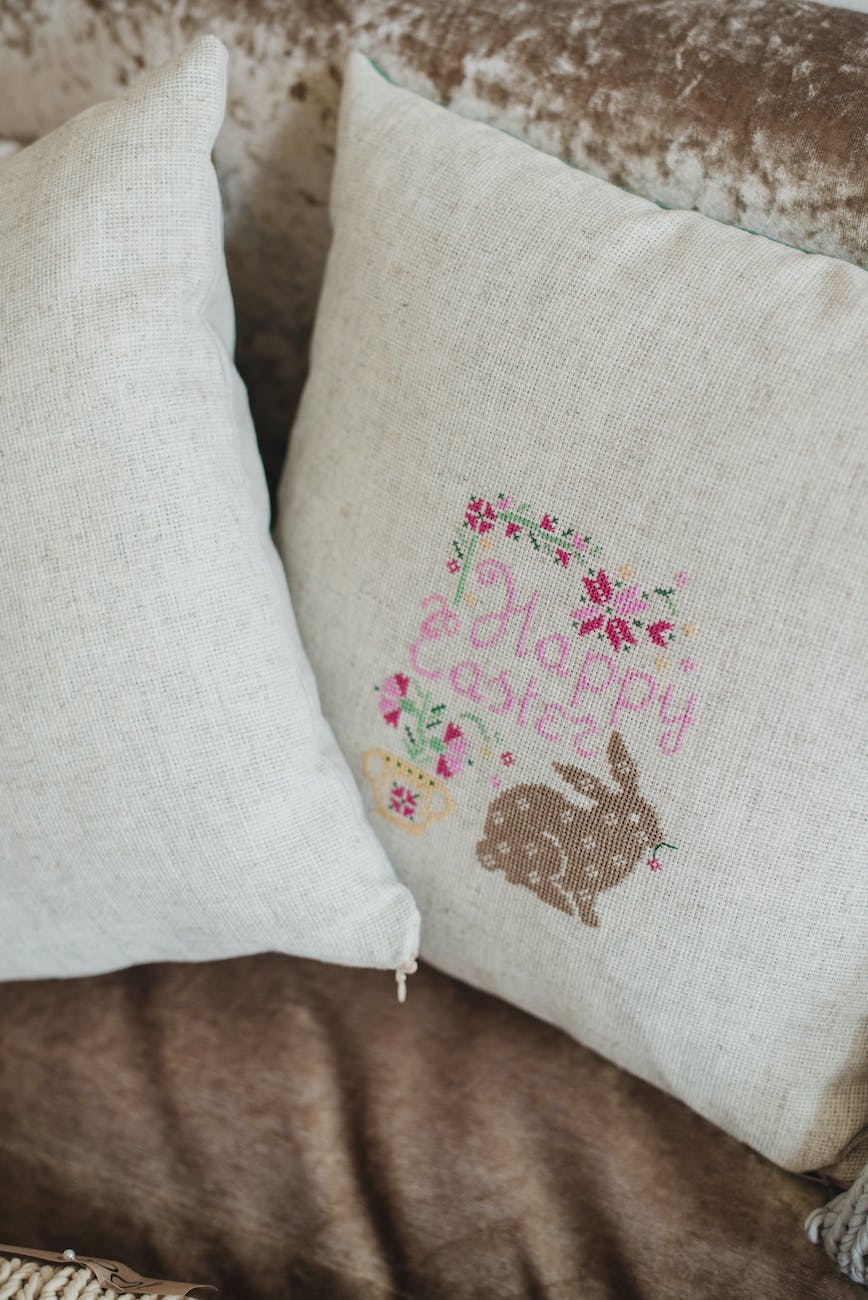embroidery on linens: beautifying tablecloths, napkins, and towels
Linen fabric is a natural fiber that has been prized for its beauty and durability for centuries. It is a versatile fabric that can be used for a variety of purposes, including table linens, towels, and clothing.
One of the things that makes linen so special is its ability to take on embroidery beautifully. The subtle luster and drape of linen fabric make it the perfect canvas for intricate designs. Whether you choose to embroider a simple monogram or a more elaborate motif, your finished product will be sure to turn heads.
In addition to being beautiful, embroidered linens can also be heirlooms. When cared for properly, they can last for generations. This makes them a great way to pass on your family’s history and traditions to future generations.
If you are looking for a way to add beauty and elegance to your home, embroidered linens are a great option. They are a timeless classic that will never go out of style.
Here are some additional thoughts on embroidered linens:
- They can be personalized with monograms, initials, or other special messages.
- They can be used to create a variety of decorative effects, such as borders, corners, and motifs.
- They can be made in a variety of colors and patterns to match your décor.
- They are durable and can last for generations with proper care.
If you are interested in learning more about embroidered linens, there are many resources available online and in your local library. You can also find classes and workshops that teach you how to embroider linen fabric.
I hope this has inspired you to consider adding embroidered linens to your home décor. With their timeless beauty and durability, they are sure to become cherished heirlooms for generations to come.
Why Embroider on Linen?
- Classic fiber with a long history of fine embroidery use
- Light enough for detail yet durable for regular use and washing
- Subtle texture provides an elegant backdrop for decorative stitches
- Makes meaningful gifts and family keepsakes full of memories
- Allows intricate allover patterns or scattered accents as desired
- Adds artistic beauty and color to table settings and kitchens
- Provides an alternative to lace, applique, beading for embellishment
- Linens offer ample blank space for monogramming and personalization
Design and Layout Tips
Focus on corners and borders using repeat patterns or asymmetric scattered motifs for impact without overcrowding the center.
Frame the perimeter with vines, geometric bands, or wreaths to define edges and contain interior space.
Make motifs proportional to the size of the linen piece so they enhance rather than overwhelm.
Use linens’ rectangular shape to arrange directional designs attractively. Florals and wreaths suit corners.
Vary motif scale when repeating patterns. Graduating sizes creates depth and movement.
Leave breathing room around focal accents so details don’t get visually lost. Avoid density.
Make sure designs and any lettering remain legible and intact when linens fold or drape.
Best Stitches for Linens
Surface satin stitches shine against the smooth linen texture and create flatness suitable for laundering.
Backstitch outlines define shapes crisply, especially with heavier threads. Avoid floppy outline stitches.
Drawn thread work takes advantage of open linen weaves. Cutwork leaves pretty motif holes.
Whitework techniques like cutwork, pulled thread, and needle weaving accentuate linen’s luminosity.
Textured fills like stitch roses, trailing stems, knots add subtle dimension without excessive pile.
Tight dense patterns like traditional Hungarian geometric motifs amplify linen’s subtle grid.
Edging stitches like blanket stitch finish edges neatly while adding flair. Prevent ravelling.
Motif Ideas for Linens
Florals – dimensional roses, daisies, laurel, vine trails, leafy stems
Geometric – crossed lines, diagonal bands, square and triangle repeats
Borders – geometric Greek keys, Celtic knots, fleur-de-lis, scallops
Monograms – solitary initials or intertwined overlapping multiple letters
Nautical – sailor’s knots, ships, ropes, seashells, starfish, anchors
Rustic – wheat sheaths, wildflowers, wood grain, leaves, berries
Whimsical – songbirds, bees, dragonflies, butterflies, hot air balloons
Ethnic – Ukrainian cross-stitch, Japanese sashiko patterns, Celtic triquetras
Finishing Embroidered Linens
- If possible, stitch items before hemming and sewing side seams to avoid need to remove embellishments for laundering.
- Carefully trim and weave in embroidery thread tails to prevent snagging during use and cleaning.
- Consider hand washing gently and line drying embroidered pieces separately from regular laundry. Avoid abrasion.
- Press linens using medium heat from backside to avoid flattening stitches. Use a pressing cloth.
- Store intricately embroidered linens safely folded in acid-free tissue to prevent creasing damage.
- Displaying on a wall, framed under glass, or laid out on a quilt rack prevents everyday wear.
Embroidered linens are a timeless classic that can add beauty and elegance to any home. They are also a great way to personalize your décor and create heirlooms that will be cherished for generations to come.
If you are interested in learning more about embroidered linens, there are many resources available online and in your local library. You can also find classes and workshops that teach you how to embroider linen fabric.
I hope this article has inspired you to consider adding embroidered linens to your home décor. With their timeless beauty and durability, they are sure to become cherished heirlooms for generations to come.
Here are some final tips for choosing and caring for embroidered linens:
- Choose linen fabric that is high quality and made from natural fibers. This will ensure that your linens will last for many years.
- Choose a design that you love and that will complement your décor. You can choose from a variety of traditional and contemporary designs.
- Have your linens embroidered by a professional embroiderer. This will ensure that your linens are done correctly and will last for many years.
- Care for your linens properly. Embroidered linens should be washed on a gentle cycle and dried on low heat.
